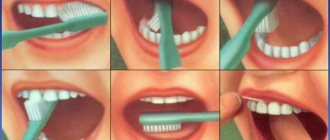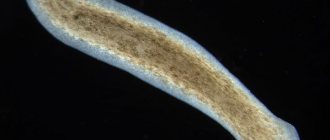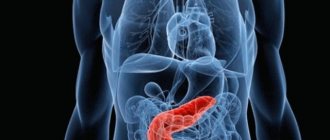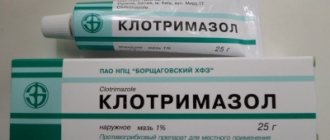How does acetone appear in the human body?
Human acetone is a mixture of three compounds (ketone bodies): acetoacetic acid, beta-aminobutyric acid, acetone.
In medicine, all three substances in the human body are united by a common name - acetone or ketone bodies. Acetone is always present in the blood in small quantities. Ketone bodies are products of breakdown and synthesis of nutrients. Normally, ketone bodies quickly reach the liver, are oxidized by special enzymes and are excreted from the body in an inactive form.
An excess of acetone occurs during various metabolic failures. The main fuel for the body is glucose. Its excess is transformed into glycogen and deposited in the liver. Glycogen is needed in case of lack of free glucose. These reserves are small; they can cover the energy deficit for only a day. If fuel is not supplied, the body looks for alternative sources of energy.
The first thing the body processes is proteins (muscle tissue). The process of protein breakdown and glycogen synthesis from amino acids involves enormous energy expenditure, which is quite difficult for the body.
The body begins to extract energy from fat reserves. Adipose tissue is broken down into fatty acids, which are transformed by enzymes into glycogen and glucose. The process is called glyconeogenesis and is always associated with the formation of acetone. This is a product of the breakdown of adipose tissue, which always appears in the body when there is a lack of carbohydrates.
Normally, acetone is slowly converted and excreted. When too many ketone bodies are formed, the liver does not have time to eliminate the excess. There are not enough special enzymes for its utilization. In this case, ketone bodies circulate in the bloodstream, and their concentration gradually increases. Another cleansing system is triggered - the kidneys. Ketone bodies damage their structure. The negative effect on the body is the toxic effect of active acetone. The substance irritates the nervous system. Small amounts provoke excitement, increased concentrations cause depression of the nervous system and the development of coma. Acetone is toxic to the brain and other organs. Against the background of an increase in the level of ketone bodies, multiple organ failure and dehydration may develop.
Dehydration can be a trigger for the accumulation of acetone in the body.
In parallel with the increase in the concentration of ketone bodies, acidification of all organoleptic systems, tissues, and biological fluids develops. This is caused by the fact that two types of ketone bodies belong to the category of acids. A condition in which acetone is elevated is called acetonemia, or ketosis (carbohydrate starvation of cells). If the concentrations are too high and the disposal systems are unable to neutralize the substance, ketoacidosis develops. This is always a pathological phenomenon, indicating serious metabolic failures. A periodic increase in acetone levels with the development of ketoacidosis is called acetone syndrome. The disease is characterized by an undulating course with periodic exacerbations - crises.
Liver and kidney diseases
The main organs responsible for cleansing our body are the kidneys and liver. They are the ones who take on all the harmful substances, filter the blood and participate in removing toxins out. With chronic diseases of these organs (hepatitis, cirrhosis, kidney inflammation), the excretory function is disrupted, and harmful substances accumulate in the body, including acetone.
In severe cases, the acetone smell comes not only from the patient’s urine and mouth, but even the skin emits acetone vapor. After treatment of liver or kidney failure, often with hemodialysis, this unpleasant symptom goes away.
How to determine the presence of acetone in urine yourself?
To do this, you can purchase special Uriket test strips in pharmacies (50 pcs. 130 rubles).
It is enough to place the test strip in a container with urine; depending on the concentration of ketone bodies in the urine, the color of the tester will change. The more saturated the color, the greater the amount of acetone in the urine.
Why does acetone level increase?
The main reason for the increased formation of acetone in the body is a lack of glucose. Ketosis refers to compensatory mechanisms. This is a manifestation of the human body’s adaptability to radical changes in living conditions. Ketoacidosis is almost always caused by serious diseases that can disrupt the physiological course of metabolic processes.
Diabetes
The disease is accompanied by a lack of insulin, a substance that transports glucose into cells.
In diabetes, the breakdown of fat deposits begins quite quickly. Compensatory mechanisms work as in conditions of severe hunger. The patient develops hyperglycemia and ketoacidosis. Conditions complicate the situation, create stress on organs and accelerate the development of coma. Similar situations are observed in other diseases of the pancreas. When the body cannot get glucose from foods, it begins to synthesize it from fat.
Errors in nutrition
Ketosis accompanies following a low-carbohydrate diet. It turns into ketoacidosis with radical fasting and abuse of protein and fatty foods. Eating large amounts of fat increases the risk of abnormal increases in acetone levels.
Infectious diseases
Symptoms of ketoacidosis accompany viral and bacterial diseases that develop with high body temperature and severe symptoms of intoxication. There may be several reasons:
- increased temperature leads to increased fluid loss;
- bacteria, viruses and their toxins can damage the liver and cause a lack of enzymes;
- against the background of intoxication, lack of appetite and vomiting often occur. As a result, dehydration and imbalance of electrolytes in the blood are superimposed on the lack of carbohydrates, which should come from food.
Ketoacidosis often accompanies infectious diseases in children. This is caused by the expressed need of the child’s body for a constant supply of carbohydrates. The condition is also triggered by increased energy expenditure to stabilize body temperature and reduced ability to replenish fluids, nutrients and electrolytes due to vomiting or weakness.
Metabolic disorders
Ketoacidosis often accompanies thyroid hyperfunction. This organ controls metabolic processes (protein and lipid metabolism). With increased concentrations of thyroid hormones, metabolism is disrupted. Increased consumption of protein and fat reserves is accompanied by a rapid accumulation of ketone bodies in the blood.
Another provocateur of acetonemia may be nephrosis - kidney disease. Loss of proteins can disrupt the body's energy supply. Less commonly, an increase in acetone levels is provoked by organic and functional damage to the liver and intestines.
What should parents of a child with a predisposition to acetonemia do?
- When you smell acetone for the first time, be sure to check your blood glucose levels to rule out diabetes.
- In case of infectious diseases, poisoning, teething, you need to give the child sweet tea or sugar.
- You can slightly reduce your intake of foods with a lot of fat.
- If the smell is not pungent, and it is not always possible to detect it, then you can buy special test strips for determining acetone in urine.
- If an odor appears and if there is vomiting or diarrhea, oral rehydration solutions should be used, 2-3 spoons every 15 minutes (Oralit, Rehydron).
- The smell of acetone from a child’s mouth is not a reason to panic. All features of such children usually disappear by 7-8 years.
Briefly about acetone syndrome
Acetone syndrome is a tendency to ketoacedosis. The condition is generated by individual characteristics of metabolic processes. Most often diagnosed in children aged 3 to 9 years. Active children with a thin build are prone to it.
Acetone levels can be measured at home using special test systems to detect ketones in urine.
The condition is provoked by insufficient supply of glucose from the outside, increased consumption during physical activity and active mental activity.
With poor nutrition, excessive physical activity, prolonged exposure to the sun and insufficient fluid intake, an acetonemic crisis can occur. The condition is accompanied by:
- a sharp increase in the concentration of acetone in the blood;
- weakness, apathy, drowsiness;
- decreased appetite;
- the appearance of nausea and uncontrollable vomiting;
- hyperexcitability of the nervous system.
An acetone crisis in children requires emergency medical care and emergency measures to rehydrate the body and restore electrolyte balance.
Treatment methods
It was said earlier that treatment depends entirely on the root cause of the problem. In addition to basic therapy, a special diet is needed to help normalize metabolic processes.
Dr. Komarovsky, known to everyone for his adequate and competent approach to the issue of children's health, recommends that parents not panic. The smell of acetone is not a disease, but just a sign of a lack or absence of glucose in the body.
First aid when this symptom appears is a sweet drink (tea, compote, fruit drink or juice) and a good diet. If the problem appears in a newborn, or it recurs frequently in a child, a full diagnosis and help from a specialist is necessary.
Medications
If specific breathing is caused by diseases of the internal organs, the main therapy should be aimed at treating them. After complete recovery, the acetone level will decrease automatically.
Before starting treatment, you need to remove toxins from the body. Sorbents approved for children cope with this - Atoxil, Smecta, Enterosgel, Phosphalugel, children's Sorbex and others. To normalize the acid-base balance and eliminate signs of intoxication, special solutions are indicated, for example Regidron.
Additional signs of ketoacidosis
Acetone breath can be considered the main sign of ketoacidosis for children. In adults, it appears less frequently and indicates serious disorders in the body.
Do not confuse unpleasant or putrid breath odor with acetone. The first indicates dental problems or inflammation in the oral cavity. Problems in the mouth cannot provoke vomiting.
Associated symptoms occur during an acetone crisis (impaired consciousness, whitish coating on the tongue, dry mucous membranes, pale skin). Adults are characterized by the development of severe thirst, drinking large amounts of fluid and increased diuresis. With increased loss of electrolytes, cardiac arrhythmia develops and blood pressure decreases greatly.
General information
When a person's breath suddenly begins to smell acetone , it is a cause for justifiable concern. This substance has a specific, recognizable aroma, so it is very easy to distinguish what acetone smells like. And since this smell comes from the air from a person’s lungs, even very thorough brushing of teeth does not get rid of this manifestation.
Acetone breath is a sign of certain diseases and conditions of the body. Some conditions are normal from a physiological point of view and are not dangerous. But there are a number of diseases in which the smell of acetone is felt from the mouth, which is undoubtedly a reason for immediate consultation with a doctor and proper treatment.
How to reduce acetone levels
If ketoacidosis is suspected, the patient must be taken to the hospital. A full examination of the body and a thorough history will allow us to establish the exact cause of the failure. If these are pathologies of internal organs, acetonemia will be eliminated by properly selected treatment. For diabetes mellitus, you will need to adjust the dose of insulin or prescribe hypoglycemic drugs.
It is important to find out why the syndrome developed. Delay and additional supply of glucose from the outside can aggravate the patient’s condition and lead to the development of coma.
Treatment for adults
For severe acetonemia in adults, treatment is carried out in the intensive care unit. First, blood substitutes are infused to reduce the concentration of toxic substances and speed up their elimination from the body. Later, drugs from the group of sorbents (Enterosgel, Atoxil, Polysorb), and enzyme agents (Creon, Pangrol) are prescribed. Further therapy consists of taking medications to treat the underlying disease.
Treatment of children
Therapy for ketoacidosis in children begins with detoxification measures. Subsequently, sorbents, enzymes, and amino acid preparations (Betargin, Stimol) are prescribed. There are no specific medications for the treatment of acetone syndrome. The task of parents is to control the activity, nutrition, drinking regime and lifestyle of the child. Overexcitement and overwork, neglect of meals and lack of sources of simple carbohydrates in the diet are contraindicated. If signs of a crisis appear, it is necessary to drink the child with sweetened water (compote, honey solution, sweet water), use amino acid preparations, rest, quality sleep and mandatory rest during the day. In this case, the situation does not develop to a crisis state, and acetone is qualitatively removed from the body.
Diet for increasing acetone levels
With ketoacetosis, it is very important to control the patient’s diet. He should drink plenty of water, which will speed up the elimination of toxic substances. Fatty foods and sources of purine compounds are excluded from the menu:
- fatty broths, meat;
- tomatoes, celery, radish, white and cauliflower, onions, garlic;
- all types of legumes;
- mushrooms;
- fatty river fish.
The diet is based on cereals and vegetable broths. Vegetables allowed are zucchini, carrots, beets, and potatoes. It is recommended to consume citrus fruits due to their alkalizing effect on the body, baked apples.
The menu is enriched with dairy products - milk, kefir, fermented baked milk, low-fat cottage cheese. Meat is administered as the patient's condition improves. Chicken, turkey, and rabbit are preferred. Processing method: boiling followed by grinding.
The functioning of the human body is impossible without the formation of toxic and harmful substances. Acetonemia is a prime example of this. Prevention of fluctuations in acetone levels consists of maintaining a balanced diet, a healthy lifestyle, and proper treatment of chronic diseases. If you consult a doctor in a timely manner, elevated levels of acetone can be eliminated with the help of medications. Delay in visiting a doctor can lead to coma, death of nerve cells, disability of the patient and even death.
Acetone in a baby: reasons
Due to the many factors that can influence the appearance of the smell of acetone in a newborn’s mouth, it is necessary to contact a specialist who will help find the main cause, rejecting all others.
Often similar phenomena occur in infants due to poor functioning of the liver, pancreas and adrenal glands. Due to dysfunction of these organs, carbohydrates are not absorbed and there is an active fight against fatty acids, as a result of which an unpleasant odor appears in the baby’s mouth.
A negative factor that caused acetone in a newborn can be a disrupted diet and an incorrectly selected diet. In such cases, if you are breastfeeding, the mother is allowed to eat low-calorie foods and exclude fatty foods. It is ideal to eat turkey and beef meat, seafood and fish. It is imperative to exclude products containing dyes and flavors; semi-finished products should not be consumed.
When the baby is artificial, in order to quickly reduce the level of acetone in the newborn, it is recommended to introduce complementary foods with foods containing phosphorus, magnesium and iron. It is permissible to consume non-acidic vegetables and fruits. It is recommended to make compote from dried fruits for the baby, and most importantly, to walk more in the fresh air.
Watch a video excerpt from Komarovsky about acetone in newborns.
https://youtu.be/F5kgzaFO9_Y
Symptoms
Signs of acetone syndrome:
- A lethargic child avoids active games.
- The complexion is pale, dark circles are visible under the eyes.
- No appetite or mood.
- Frequent attacks of headache.
- Body temperature rises to 40 degrees.
- Bruises appear under the eyes, the skin turns pale
- Paroxysmal pain appears in the intestines.
- The urine also smells like acetone.
Acetonemic vomiting in a child is very life-threatening. The body loses a large amount of fluid, and the salt balance is disturbed. More severe forms include seizures, abdominal cramps, and diarrhea. Timely assistance will help protect the child from death.
The first symptoms of the disease are observed in a child of 2-3 years of age. Then the symptoms of the disease appear at the age of 6-8 years. By the age of 13, the disease disappears completely, since the formation of the liver ends and by this age there is a sufficient supply of glucose in the body.
Exacerbation of acetonemic disease occurs as a cause of poor nutrition and heredity. If the baby had relatives who had metabolic disorders, diabetes mellitus, or cholelithiasis, then the risk of these diseases will be much higher. The doctor will make an accurate diagnosis during the examination.
The smell of acetone when fasting
The fashion for all kinds of diets has embraced the entire female and part of the male population. Moreover, some of the food restrictions are not related to medical reasons, but to the desire to meet beauty standards.
- It is precisely these “non-medical” diets that often lead to deterioration in health and appearance.
- A diet with a complete refusal of carbohydrates can lead to energy deficiency and increased breakdown of fats.
- As a result, the body will be filled with harmful substances, intoxication and disruption of the functioning of all organs will occur.
- The smell of acetone, loose skin, brittle hair and nails, weakness, dizziness and irritability - this is an incomplete list of all the consequences of a strict carbohydrate-free diet.
Therefore, an experienced nutritionist should be involved in developing a balanced diet for losing weight. It will also help you get rid of the consequences of independent attempts to correct your figure. The smell of acetone from the mouth itself does not require treatment. TOP 5 dangerous low-carb diets:
- Kremlin diet
- Atkins diet
- diet of Kim Protasov
- protein diet
- french diet
What explains the change from habitual breath odor to acetone?
Acetone has a toxic effect on the human body and is dangerous for children.
If its concentrations in the blood are high for a long time, the consequences may be irreversible. Treatment of the disorder must be approached comprehensively. The treatment regimen involves the use of pharmacological compounds and adherence to a strict diet. Monitoring of oral hygiene is necessary.
Determining the treatment regimen is possible after identifying the cause that provoked the disorder. The list of medications used for acetonemia is relative.
Medications have contraindications:
- Nicotinamide. Provides the process of regulating glucose in the blood.
- Enterosgel. Used to eliminate symptoms of poisoning.
- Cerucal. Helps cope with vomiting, which is a cause of dehydration.
- Regidron. Regulation of water-salt balance.
- Atoxyl and smectite – ensures the removal of toxins.
- Betargin. Provides normalization of liver processes.
- Creon. Used to support the digestion process.
To eliminate such a remedy, combinations of drugs are used. For example, if the cause of the disorder is a malfunction of the liver and kidneys, Cerucal and Nicotinamide are indicated. Doses of medications are determined individually after assessing the patient’s condition. It is important to consider the age range.
When the concentration of acetone increases, you need to follow the diet. It is worth limiting the consumption of products from the list:
- cauliflower and broccoli,
- chips,
- sour cream,
- offal,
- legumes,
- carbonated drinks.
You should stop self-medication and go to the hospital immediately if:
- the child showed noticeable signs of dehydration - dry, parchment skin, pale mucous membranes, chapped lips;
- parents are unable to give their child water due to incessant vomiting;
- the baby loses consciousness and falls asleep while walking;
- convulsions appeared.
Treatment in a hospital consists of the following:
- IVs with glucose are prescribed;
- injections of antispasmodics are given if a small patient suffers from cramps and abdominal pain;
- Antiemetics are given to improve the functioning of the intestines and liver and normalize metabolism.
When the acetone level is increased, as a rule, the first to be used are:
- Atoxil - eliminates toxins;
- Regidron - normalizes water balance;
- Smecta - resists the penetration of toxins through the intestinal walls.
Dr. Komarovsky does not consider the smell of acetone in children to be a disease. From his point of view, this is the specificity of metabolism that is worth taking into account. As a preventive measure, it is enough not to limit children’s sweets and ensure that they drink plenty of fluids.
Dr. Komarovsky knows exactly what to do if a child has acetone
If an acetonemic state appears before vomiting occurs, you need to start giving the child glucose, a teaspoon every five minutes.
Detection of bad breath in a child should not cause parents to panic, but it should mean that it is time to take certain actions.
In order for all life processes to proceed normally in the human body, it requires glucose, which comes with certain foods. In a healthy adult, glucose accumulates in the form of glycogen, the reserves of which are sufficient even for several hours and days in order to feel relatively normal.
Children do not have such a glycogen depot in their bodies, and glucose is quickly consumed. This process is accelerated by intense physical or mental stress. To replenish glucose, the body has to start breaking down fats, resulting in the formation of ketone bodies, including acetone. If there is little of it, then it quickly and without any special consequences for the body is released through the lung tissue during breathing and through the urinary system.
But if too much acetone is formed, then a pronounced odor appears in children’s mouths. But this is not the most important thing - the breakdown products in the body negatively affect those parts of the brain that are responsible for appetite and control the gag reflex. Therefore, acetone syndrome develops, characterized by:
- The appearance of periodic vomiting;
- Severe fatigue and weakness;
- Increased thirst;
- Smell of acetone in the mouth;
- Skin itching;
- Sleep disturbance.
Dr. Komarovsky divides acetonemic syndrome into primary, that is, occurring in completely healthy children under the influence of easily remediable disorders. It is quite possible to treat such changes at home, and this does not always require the use of drug therapy. But there is also a secondary acetone smell, indicating diseases of the digestive system, a malfunction in the endocrine system and a number of other pathologies.
Glucose is considered the main source of energy for the body. Less effective substances are animal cells. If the body does not have enough glucose, fats are absorbed, which can negatively affect well-being. Negative health components are eliminated through the kidneys and respiratory system.
This is why the smell of acetone appears from a child’s mouth. The negative impact on the body is due to an unbalanced diet. Children need to be given more glucose compared to adults.
According to Komarovsky, acetonemic syndrome is not a disease, but just a peculiar feature of the child’s metabolism. It is quite difficult to name the exact cause of the syndrome, the doctor believes. The main ones include: diabetes mellitus, fasting, disruption of normal liver function, previous complex infectious diseases, head injuries.
The doctor claims that heredity is an additional reason. The development of acetone syndrome is influenced by the child’s condition. Parents should observe the baby and carefully study the symptoms.
Experts recommend not to panic if you detect the smell of acetone in a child; you also cannot do nothing. Both parents should be ready to help the child if necessary.
For any disease, it is easier to take preventive measures than to then urgently treat, says Evgeniy Olegovich. You should not use medications immediately at the first signs of acetone syndrome - this can harm the child. Some rules should be introduced into the daily life of the family and the child in particular.
In the baby's diet, the amount of animal fats should be minimal. It is best to exclude them from the diet altogether. In simple words, it is recommended to avoid butter, meat in large quantities, margarine, and eggs. Carbonated drinks, smoked foods, spicy seasonings, and pickles are strictly prohibited.
The doctor advises preparing various porridges in water, mashed potatoes, and apples. Raw fruits are prohibited; they can only be eaten baked. You need to give your child more dried fruits and raisins. The diet should include vegetables and lean meat.
Between main meals, experts recommend giving your child a banana and semolina porridge with water. They contain light carbohydrates. The baby should definitely drink a lot of water. It should be warmed to the child’s body temperature.
In an adult, the reasons for the smell of acetone from the mouth can be completely different. If you are concerned about this problem, check out its possible causes and treatments.
Bad breath in a child can indicate various diseases. In some cases, it is enough to visit the dentist, in others it is worth going through a series of tests and starting treatment. The smell of acetone is a serious danger. It indicates a malfunction in the child’s body, which can lead to irreversible consequences.
The task of parents is to promptly begin to provide first aid to the baby in such conditions in order to ease his well-being and avoid undesirable consequences. We will look at the reasons that affect the increase in acetone in a child’s body and talk about methods to combat them. We will also share the secret of how to quickly and effectively reduce acetone in a child.
Drug treatment should only be prescribed by the attending physician. Most often, enzymes and sorbents are prescribed. In addition to medications, the following recommendations must be followed:
- Drink plenty of fluids;
- Special diet;
- Walks in the open air.
Drinking enough fluids during illness is important. The liquid helps remove harmful substances from the body. Therefore, you should give your child water even at night. To more effectively get rid of toxins, regular water should be alternated with mineral water and rice water. Forcing a child to eat food is not recommended. But when the child has a desire to eat, the food should be light.
The following are strictly excluded from the diet:
- Semi-finished products;
- Salty foods;
- Fried foods;
- Sausage, frankfurters, small sausages;
- Fatty dairy products.
During the start of treatment, the diet is very poor. You can eat potatoes and porridge with water, vegetables and vegetable broths, black bread or crispbread, sweet compotes and teas, water. After normalization of the condition, the diet is gradually expanded. All recommendations for expanding the diet can only be given by a doctor.
If the child’s condition is serious, immediate hospitalization of the child is required for the purpose of intravenous infusion therapy. Treatment will take place under the strict supervision of a doctor.
Do not forget that in case of diseases associated with impaired glucose levels, physical and mental stress should be avoided. The child can do light exercise, but there is no need to send the child to sporting events or strenuous sports activities.











